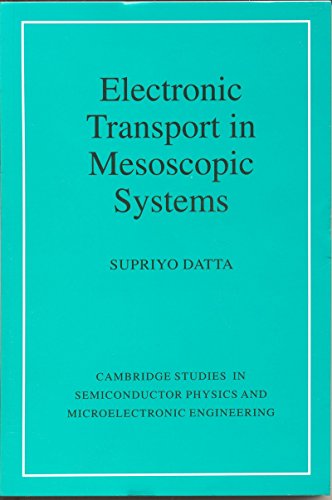(Exclusive to Tata Book House) Electronic Transport in Mesoscopic Systems
(Exclusive to Tata Book House) Electronic Transport in Mesoscopic Systems is backordered and will ship as soon as it is back in stock.
Couldn't load pickup availability
Genuine Products Guarantee
Genuine Products Guarantee
We guarantee 100% genuine products, and if proven otherwise, we will compensate you with 10 times the product's cost.
Delivery and Shipping
Delivery and Shipping
Products are generally ready for dispatch within 1 day and typically reach you in 3 to 5 days.
Sign up to be the first to know when it's here
Book Details:
-
Author: Supriyo Datta
-
Publisher: Cambridge University Press
-
Edition: South Asian
-
Binding: Paperback
-
Pages: 393
-
Release Date: 17-08-2011
-
ISBN: 9781107605282
-
Dimensions: 8.9 x 5.9 x 0.6 inches
-
Language: English
About The Book:
Electronic Transport in Mesoscopic Systems by Supriyo Datta offers an in-depth analysis of the theory behind electronic transport in semiconductor nanostructures, especially those with dimensions smaller than the electron’s mean free path. This book is the first comprehensive treatment of this topic, focusing on mesoscopic systems and their distinct characteristics compared to macroscopic systems.
The text begins with an introduction to fundamental concepts and then moves into the transmission function formalism, which is central to describing key topics in mesoscopic physics, including the quantum Hall effect, localization, and double-barrier tunneling. The book also explores optical analogies to mesoscopic phenomena, providing a unique perspective on these topics.
Further, Datta introduces the non-equilibrium Green’s function formalism, establishing its connection to the transmission formalism, thus giving readers a solid foundation in both theoretical and computational approaches to electronic transport in these systems. The book includes problems and solutions, making it a useful resource for both self-study and classroom use.
This work will be of great interest to graduate students in mesoscopic physics and nanoelectronic device engineering, as well as to established researchers in these fields. It's a vital resource for anyone working with or studying the theory of electronic transport in small-scale semiconductor systems.




